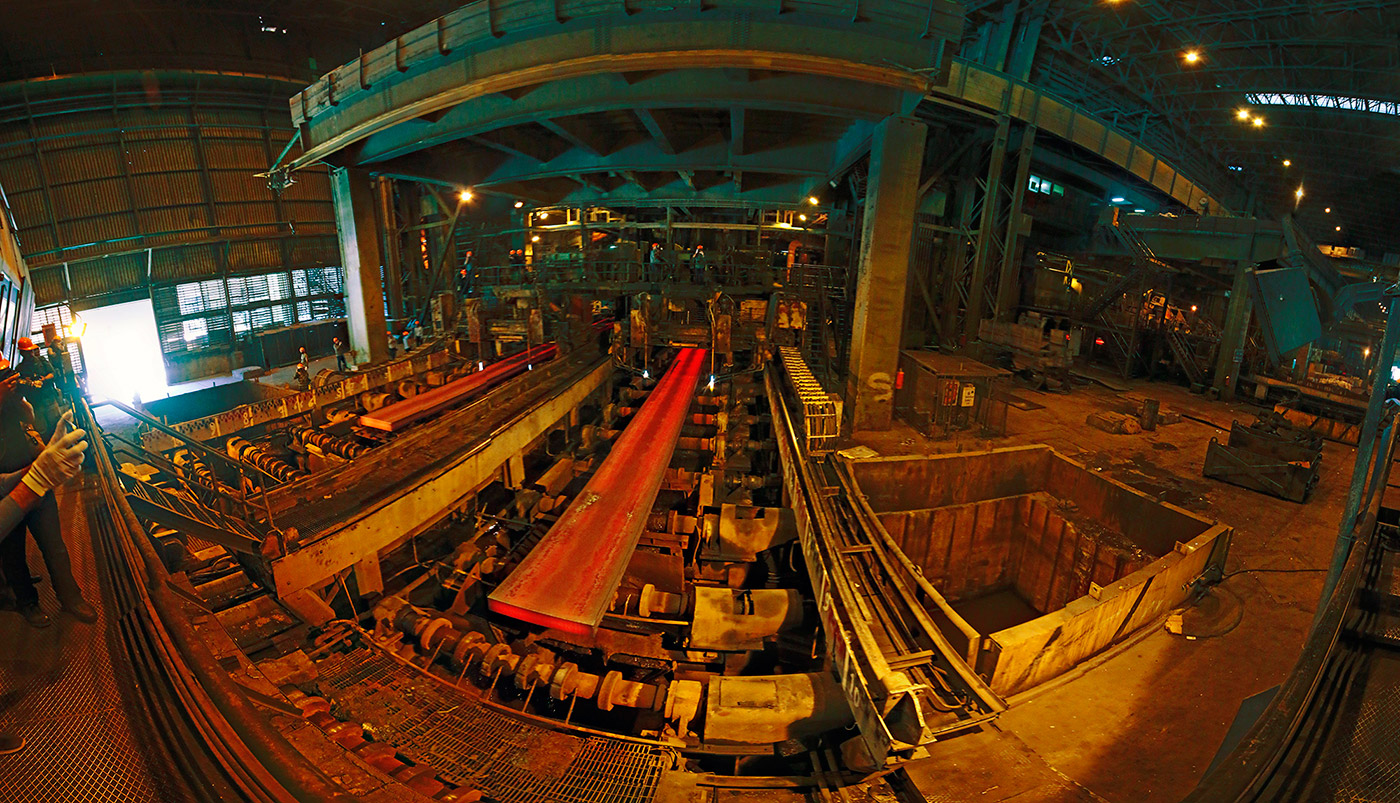Mobarakeh Steel Company, Iran’s largest flat steel producer, aims to increase its slab exports rapidly over the next couple of years.
“The plan follows the expansion of the company’s finished steelmaking capacity in recent years,” MSC Managing Director Bahram Sobhani told Metal Bulletin at the 21st Middle East Iron & Steel Conference in Dubai, the UAE.
Growing Slab Capacity
At the end of 2016, Mobarakeh Steel added a 1.8-million-ton continuous casting machine at its main plant in Isfahan Province that increased annual slab capacity to 7.2 million tons. Currently, it feeds a 5.5-million-ton per year hot-rolling mill.
The company also operates a 1.5-million-ton slab facility at its Hormozgan Steel Complex (Hosco) subsidiary and a 1.6-million-ton continuous strip production unit at its Saba Steel complex.
Saba Steel doubled its capacity this past April and is self-sufficient in slab, but does not produce slab for sale.
“This Iranian year [ending March 20, 2018], we have approximately 2.4 million tons of slab to sell in the free market,” Sobhani said, adding that about 1 million tons will be from Mobarakeh Steel’s plant since it has not yet reached its full capacity and another 1.4 million tons coming from Hosco.
“Around 1.2 million tons of slab will be exported and about the same amount will be sold in the domestic market.”
With the expansion of Mobarakeh Steel’s capacity, the country’s slab exports have more than tripled to 1.72 million tons in the first seven months of the current Iranian year.
“In the second half of 2018, Mobarakeh Steel plans to add another 1-million-ton per year slab facility at its Sepid Dasht Steel subsidiary,” Sobhani said, which will result in higher exports.
Shrinking Hot-Rolled Coil Exports
Sobhani expects slab exports to grow in the coming Iranian year, particularly shipments to European and Asian customers to replace hot-rolled coil exports that were restricted by trade defense measures this year.
The European Commission in October imposed fixed charges of €17.60-96.50 ($20.65-113.25) per ton against HRC originating from Brazil, Iran, Russia and Ukraine, with Iran receiving a charge of €57.50 per ton.
Thailand set a definitive duty of 7.25% for HRC from Mobarakeh Steel in May, with the duty for other Iranian producers standing at 38.27%.
As a result, Iran’s HRC exports dropped by 77% year-on-year to 195,000 tons over the seven months of the current Iranian year (March 21-Oct. 22, 2018), according to the Iranian Steel Producers Association’s latest report.
But trade restrictions were not the only reason for the reduction in Iran’s HRC exports this year.
The consumption of flat steel products in the country’s domestic market increased due to a pickup in the automotive, pipe-making and house appliance industries, leading Mobarakeh Steel to reallocate most of its production volumes to the domestic market.
Sobhani estimates that Iran’s flat steel consumption will total 5 million tons in the current Iranian year and reach 6.5 million tons next year.
The needs of local customers, for HRC in particular, are expected to be covered mainly by domestic material despite a recent 10% reduction in Iran’s import duties.
“I believe still another 1 million tons of flat steel products will be imported, but not in the quality that was bought this year,” Sobhani said, adding that he expects more value-added and high-quality steel products to be imported next year rather than commercial grade material.
“With the doubling of hot-rolling facilities at Saba Steel Complex, which we recently commissioned, Iran will be sufficient in HRC with thickness from 2 millimeters and up,” he said.
Long-Term Perspective
Based on the expectation that flat steel consumption in the country will show sustainable growth, Mobarakeh Steel is preparing to launch new rolling capacity over the next three years that in turn could influence its slab exports in the long run.
Asked about the share of slab exports in the company’s 2025 Vision plan, Sobhani said if the situation in the flat steel market is favorable, there could be no excess slabs available from the company by that time.
“We are installing a new hot-rolling mill with [an] annual capacity of 3 million tons at Mobarakeh Steel. It means in the next three years we will have no slabs to sell in the free market from this unit,” he said.
“We are installing a second production line [at Hosco], which will be ready by 2020 so that the unit’s slab capacity will increase to 3 million tons,” Sobhani added, noting that sooner or later a hot-rolling mill will be installed there and the company will not have extra slabs again.


